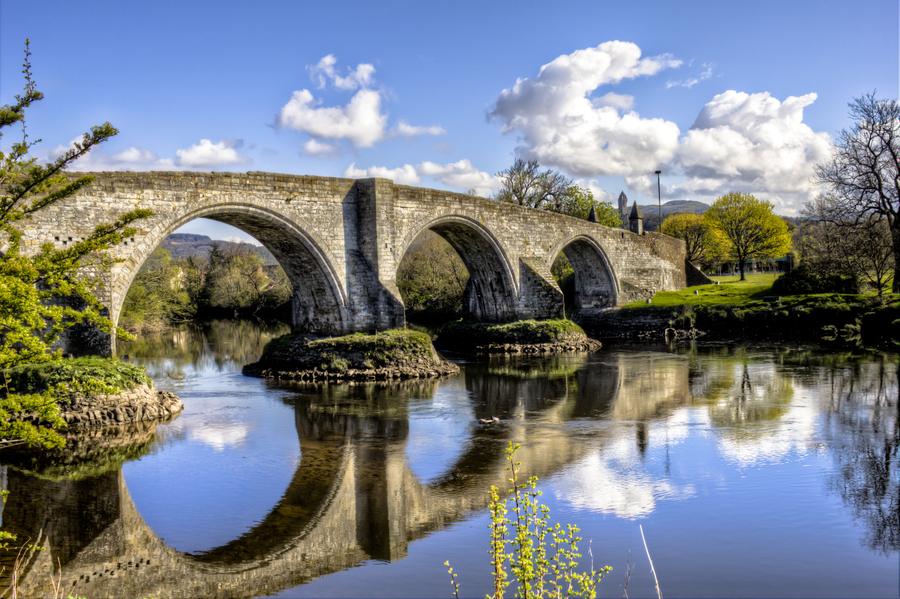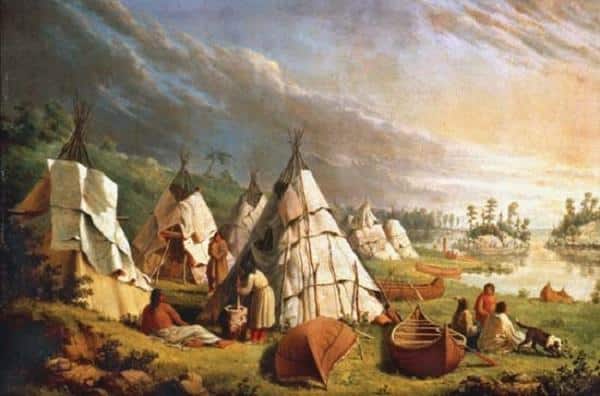A long time ago in Ireland there lived a man named Columba who loved books.
—Jean Fritz, The Man Who Loved Books (1981)
My son, I tell thee soothfastlie;/ No gift is like libertie;/ Then never live in slaverie.
—a translated precept from Wallace’s uncle, the priest of Dunipace
Creation, Covenant, and Representation
The doctrine of creation places an infinite gulf between the Being of God and that of His creation, a gulf that humanity can’t bridge. Man can never become God—not by magic or politics or education or technology. And, God never merges Himself with created being. (He also limits the way He reveals Himself.) Only in Jesus Christ did God become true man, and even there the humanity and the divinity are united “not by confusion of substance, but by unity of Person” (Athanasian Creed).
This means the doctrine of creation lays the axe to all forms of pagan mysticism. Man can never “reach out and touch the face of God.” Man’s thoughts, intuitions, and feelings are never divine. Man can never look into his heart and find God there. God reveals Himself, not subjectively in the human heart, but objectively in His written Word.
So the doctrine of creation leads immediately to the biblical idea of covenant, particularly to the biblical concept of representation. God represents Himself to His people through His written Word, and He appoints representatives in family, church, and state to enforce that Word with their respective spheres. But since God directs His Word to all of His people, they all have the authority and responsibility to ask, even insist, that those in authority over them fulfill their God-given charge. All of God’s people then … are kings and priests (Rev. 1:6) and represent Him to one another, to their own communities, and to the wider world.
Even more, this business of covenant keeping is also trans-generational. Parents, pastors, and even statesmen are supposed to transmit—that is, represent—the covenant faith to the next generation in such a way that it will do the same (Ps. 78:1-8). This involves faithful instruction in the church and home, sound Scripturally-based laws, godly traditions and habits, and of course lots and lots of books.
Covenant Implications
Whenever God’s people begin to understand the implications of creation and covenant, certain shifts in society and culture inevitably follow. First, God’s people cease to be impressed with claims of men in politics and church. They know they have one King, Christ Jesus. All human kings, bishops, and parliaments are His servants. None of them are God and none speaks with divine authority or can rightly claim divine authority. The godly man with an open Bible in hand can stand before them all and say, “Thus saith the Lord!”
Second, God’s people want to read His Word. They want their children to learn how to read so that they too can enjoy the Word. So God’s people support Bible translation and publishing. They build schools and pay teachers. They value higher education. They encourage their pastors to learn Greek and Hebrew. They write, print, and buy Bible commentaries and books on theology. And the more they read and learn, the more they understand that Scripture speaks to all of life. Then they want more books, books on how to apply God’s Word to every area of life. They finance, print, and buy those, too.
Third, God’s people understand that they themselves are competent to act as leaders in family, church, and civil government. They see that God’s Word can equip them to judge and rule with wisdom, discretion, and assurance (1 Cor. 6:1-5). They learn, though often little by little, to apply God’s law to every area of life.
Fourth, when the greater authorities fail to honor God’s law or, worse, become lawless in their policies and actions, God’s people eventually feel compelled to resist their tyranny and lawlessness. Being people of the covenant, a people used to laws and representatives, they normally begin with the most peaceful means. Pastors, elders, and local officials take the lead. The resistance begins with the spoken and written Word. Preaching and prayer are central. Later come tracts, blogs, newspaper articles, letters, and books. Then there may be rallies and campaigns and even some marches and demonstrations. Only when all else has failed will they turn to armed resistance under the leadership of what the Puritans called “lesser magistrates.” And even then they refuse to resort to torture, terrorism and anarchy. They know that even a war for freedom is subject to God’s law.
A Case Study: Christianity in Scotland
It may help to see some of this played out in the theater of history. Let’s consider the people of Scotland in terms of their Christian heritage.
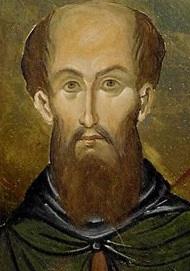
Christianity may have reached Scotland by the end of the 1st century. But the missionary usually credited with winning the Pictish north to Christ is St. Columba (Comcille). Columba was an Irish prince turned churchman. He loved books. I really mean “loved” books … coveted them really. And that got him into trouble. Columba made a copy of a psalter contrary to the owner’s wishes. The owner appealed the matter to the king. The king’s judgment favored the psalter’s owner, and Columba had to surrender his manuscript copy. He was very angry. That anger led him to precipitate a war between his father’s people and the king’s. The resultant battle cost 3,000 lives.
Columba was almost excommunicated for this. Instead, he went into self-imposed exile out of sight of his beloved Ireland as penance. He went with 12 companions to the island of Iona, where the company established a monastery as a base for the evangelism of what we today call Scotland.
Columba led the Pictish king “Brute” to at least a formal acceptance of Christianity. He founded many churches in the Hebrides, turned Iona into a school for missionaries, and made it the brightest beacon of literacy in the north of Britain. He personally translated some 300 books. He intervened in local politics to advance the Gospel and served as a diplomat among the tribes, who respected him for his godliness. He died in 597, the same year Augustine of Canterbury arrived in pagan England.
Scotland in the Age of Faith
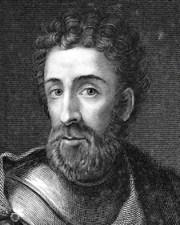
The Anglo-Saxon invasion drove the Celtic Christians west and north. For a long while the Celtic church was effectively cut off from Continental influence. When Augustine led the Saxon kingdoms to Christ, there remained some emotional and practical distance between the Celts and the English. After all, the Saxons had robbed the Celts of their lands and had destroyed their kingdoms, churches, and families. Practically, the churches differed in matters of liturgy and especially in the way they calculated the date for Easter. More than this—at least according to Peter Berresford Ellis in his Celtic Inheritance (1985)—“The Celtic Church emphasized active participation by the people, sharing in the worship while the deacon led the congregation in prayers and the people would make responses with psalms and hymns” (45).
Eventually the church in Scotland fell into step with Continental and Roman practices, though it retained emphases consistent with its Celtic culture and past.
Now when we think of Scotland in the late Middle Ages, we mostly think of one man, William Wallace. We know Wallace from Sir Walter Scott, Jane Porter’s Scottish Chiefs (1810), Henty’s In Freedom’s Cause (1885), and of course from the Mel Gibson film, Braveheart (1995). During the Wars for Independence, Wallace led the resistance against English usurpation and tyranny. He won the Battle of Stirling Bridge (1297), but lost at Falkirk the following year. Eventually, he was captured by the English, charged with high treason, and executed in a horrific manner.
Wallace belonged to an era when the Christian faith was the cultural given and justice and freedom were the ethical ideals. Mackay writes, Wallace “grew up in a time of peace and plenty, when trade flourished and law and justice prevailed” (28). Formal Christianity was characterized by “splendid religious houses” such as “the great cathedrals from Glasgow in the south to Dornoch in the north,” and the “magnificent abbeys and monasteries” spread across Scotland (27). The Scots people invested heavily in their faith.
Unfortunately, we know very little about Wallace himself and less about his Christian convictions. The Scotichronicon, however, does say this of Wallace, “. . . the Lord was with him, and with His help he was a man successful in everything; with veneration for the church and respect for the clergy, he helped the poor and widows, and worked for the restoration of wards and orphans bringing relief to the oppressed. He lay in wait for thieves and robbers, inflicting rigorous justice on them without any reward. Because God was very greatly pleased with works of justice of this kind, He in consequence guided all his activities” (Mackay, 30).
Mackay also tells us, “Evidence of William’s early religious education is provided by the psalter which he habitually carried on his campaigns, and his attachment to the Psalms of David was noted by the eyewitnesses of his execution” (31). In short, we may believe with confidence that William Wallace was a very serious Christian in his faith and a man unafraid to act upon its civil implications. His last word may not have been, “Freedom!”, but liberty was a central theme of his life.
(To be continued)
For Further Reading:
Rousas J. Rushdoony, The Foundations of Social Order, Studies in the Creeds and Councils of the Early Church (Vallecito, CA: Chalcedon, 2003).
F. F. Bruce, The Spreading Flame, The Rise and Progress of Christianity from John the Baptist to the Conversion of the English (Exeter, England: Paternoster Press, 1958).
Peter Berresford Ellis, Celtic Inheritance (New York: Dorsett Press, 1985).
James Mackay, William Wallace, Brave Heart (Edinburgh, Scotland: Mainstream Publishing, 1995).
Peter and Fiona Somerset Fry, The History of Scotland (London: Routledge, 1982).


